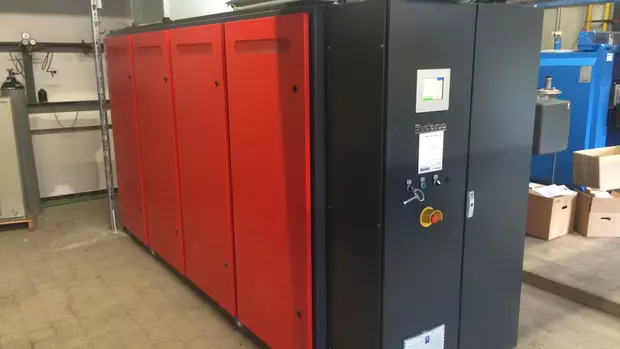
For a highly efficient and climate-friendly cooling and heating supply, the company Bänninger from Reiskirchen will be relying on the principle of combined heat, power and cooling in future. Stadtwerke Gießen was responsible for the design and construction of the new plant.
For more and more companies, combining economic and ecological interests is a matter of course. In future, Bänninger Kunststoff-Produkte GmbH will therefore rely on a highly efficient and climate-friendly energy supply based on combined heat, power and cooling (CHP).
A modern combined heat and power plant (CHP) will generate electricity and heat at the same time. A large proportion of the latter will be converted into cooling using an absorption refrigeration unit. The CHP unit has an electrical output of 140 kilowatts (kW) and a thermal output of 212 kW. The absorption refrigeration unit with an output of 175 kW supplies the building with cooling in the summer months. "In the production of our plastic pipe fittings, we need cold water around the clock to cool the machines and tools. We turned to Stadtwerke Giessen to reduce our electricity consumption and thus our production costs, while at the same time finding an environmentally friendly solution," explains Burkhard Schulz, Technical Manager at Bänninger.
Climate-friendly and efficient
"Due to the constantly high electricity demand, we designed a system based on combined heat, power and cooling for Bänninger. The combined heat and power principle is supplemented by the aspect of air conditioning - or in this case, process cooling," explains project manager Christian Spratte from the heat supply department at Stadtwerke Gießen.
The new, combined system ensures that the primary energy used is also utilised efficiently outside of the heating season. "The long running time of around 7000 hours significantly increases the average efficiency of the combined heat and power plant," emphasises the project manager. The electrical energy produced is consumed directly at the plant, with any surplus flowing into the public grid. While the thermal energy generated is used for cooling production in summer, it supplies the building heating in winter. In the cold months, Bänninger continues to rely on so-called free cooling, i.e. cooling using the outside air.
The ecological comparison with the separate production of electricity and heat shows that Bänninger will save around 600 tonnes ofCO2 in future. "That corresponds to around 50 per cent of the previous emissions," adds Christian Spratte.
SWG as a competent partner
When designing the plant, however, the focus was not only on climate friendliness and economic efficiency. "An additional requirement for this project was the integration of the new CHP plant into an existing system," says Christian Spratte. "In Stadtwerke Gießen, we found a competent, experienced partner who built the new plant according to our specifications and will continue to operate it in the future," reports Burkhard Schulz from Bänninger.

